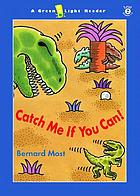

Early Childhood Education Lesson: Dinosaur Hokey Pokey
OVERVIEW
Bring Catch Me If You Can! to life with dramatic play as children enjoy a fun game of hokey pokey using phrases from the story.
LESSON TIME FRAME
30 minutes
SUBJECT AREA
ELA
Creative Thinking
21st CENTURY SKILLS
Critical Thinking
Informational
Literacy
KEY VOCABULARY
afraid
armored
biggest
catch
claws
dinosaur
grabbed
hide
hokey pokey
horned
imitate
little
pointy
sharp
tail
LEARNING OBJECTIVE
At the end of this lesson, the learners will be able to:
- Develop literacy skills by engaging in imaginative play utilizing descriptive vocabulary and demonstrating body awareness.
- Imitate, recall, and use new words (dinosaur names and adjectives, such as sharp, pointy) during and after a reading of Catch Me If You Can! by Bernard Most
MATERIALS
- Catch Me If You Can! by Bernard Most
- Dinosaur Hokey Pokey handout
EARLY CHILDHOOD LEARNING STANDARDS
9.1.D K.E Use imagination and creativity to express self through dramatic play.
The learner will:
- Represent fantasy and real-life experiences through pretend play.
- Imitate roles of people, animals, or objects observed in life experiences.
The adult will:
- Create situations where students can role-play familiar roles or situations. (e.g., home living, grocery store, restaurants)
- Ask open-ended questions to extend student’s play in new directions.
- Provide dramatic play opportunities both inside and outside.
- Provide clothing, materials, and props that facilitate pretend play.
1.3 K.A With prompting and support, retell familiar stories including key detail
The learner will:
- Retell story in sequential order.
- Recall key details of a story.
- Use a variety of strategies to retell a story. (e.g., picture cards, dramatic play, illustration)
The adult will:
- Select appropriate literary text.
- Model retelling with key details.
- Provide multiple opportunities to practice retelling.
- Ask questions that support the use of sequencing. (e.g., “What was the first thing that happened?” “What happened after?”)
PREPARATION
Before beginning, prepare background information to share with the children. Adjust the level of details given to fit the age group.
For example:
Within Catch Me if You Can! by Bernard Most, there are eight different types of dinosaurs: Ankylosaurus, Diplodocus, Hadrosaurus, Iguanodon, Stegosaurus, Struthiomimus, Triceratops, and Tyrannosaurus rex. All but two (Tyrannosaurus rex and Struthiomimus) of the dinosaurs are herbivores, meaning that they only ate plants. They lived long ago during the Cretaceous (over 65 million years ago) and late Jurassic period (over 145 million years ago). With the exception of the Iguanodon, fossils of these dinosaurs have been found in North America.
INTRODUCTION
Gather the students to sit in a circle. Initiate a conversation about dinosaurs, providing background information, and prompting discussion about kinds of dinosaurs and favorite dinosaurs.
INSTRUCTION/TEACHER MODELING
Read Catch Me if You Can! by Bernard Most, pausing to identify types of dinosaurs, and encourage children to describe the dinosaurs. Emphasize features that will be named in the Dinosaur Hokey Pokey song: necks, heads, claws, teeth, backs, and tails. Be certain that each child has a chance to participate. Encourage non-talkers to point to something on the page. At the end of the story, let each child point to and name their favorite dinosaur, telling something about how it looks (e.g., long neck, big teeth, spikes).
ASSESSMENT
Invite children to pretend to be dinosaurs and suggest that they play a Dinosaur Hokey Pokey with you. If children are unfamiliar with the hokey pokey, consider playing a traditional version of the game first, and then playing the dinosaur version.
Connect the words of the song to the book you just read, e.g., “We put our long necks in, we take our long necks out." Then insert, "What kind of dinosaur has a long neck?” Or when children are pretending to put their armored backs in the circle, say, “Oh this looks like a circle full of stegosauruses!” Praise children for their attempts to recall and use the new vocabulary.
Praise students for their performance in the Dinosaur Hokey Pokey. Invite students to share one of their favorite parts of the lesson.
ADDITIONAL TEACHER NOTES
Play a game that focuses on recall skills: Gather students in a circle, go around and have each kid perform one dance move. As you go around the circle each child will be tasked to recall the previous dance moves and then create their own.
